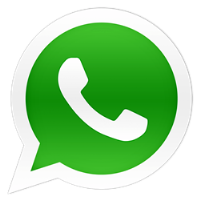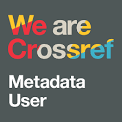Digital Literacy and Teaching Creativity of Educators in Learning Activities: A Survey Method Review
DOI:
https://doi.org/10.51574/ijrer.v1i3.267Keywords:
Digital Literacy Skills, Learning Activities, Educator Teaching CreativityAbstract
This study aims to determine the relationship between educators' digital literacy skills and the creativity of teaching educators at state vocational high schools in Gowa Regency. This study applies a survey method that is correlational with a quantitative approach. The population in the study were educators with the status of civil servants in 5 state vocational high schools in Gowa Regency and as many as 70 educators who were sampled through the proportional random sampling technique in each population unit to obtain research data. This research used a Likeart scale questionnaire that has been validated and meets the reliability requirements. The data analysis technique to achieve the research objectives uses inferential statistics, namely simple correlation analysis. The results of the study reveal that, based on the Pearson correlation value obtained from a simple correlation analysis of 0.731 with a positive direction and sig.p 0.00 < (0.05) which gives an understanding that there is a significant relationship between educators' digital literacy skills and educators' teaching creativity at State Vocational High School in Gowa district, and obtained a coefficient of determination of 53%, which means that 53% of the total variance of the values of educators' teaching creativity can be explained by the values of educators' digital literacy skills.
References
Ally, M. (2019). International Review of Research in Open and Distributed Learning Competency Profile of the Digital and Online Teacher in Future Education. International Review of Research in Open and Distributed Learning Competency, 20(2), 303–318. https://id.erudit.org/iderudit/1061343ar
Anisimova, E. (2020). Digital literacy of future preschool teachers. Journal of Social Studies Education Research, 11(1), 230-253. https://www.learntechlib.org/p/216438/
Asari, A., Kurniawan, T., Ansor, S., & Putra, A. B. N. R. (2019). Kompetensi literasi digital bagi guru dan pelajar di lingkungan sekolah kabupaten Malang. BIBLIOTIKA: Jurnal Kajian Perpustakaan Dan Informasi, 3(2), 98-104. http://journal2.um.ac.id/index.php/bibliotika/article/view/11592
Blau, I., Shamir-Inbal, T., & Avdiel, O. (2020). How does the pedagogical design of a technology-enhanced collaborative academic course promote digital literacies, self-regulation, and perceived learning of students?. The internet and higher education, 45, 100722. https://doi.org/10.1016/j.iheduc.2019.100722
Cayirdag, N. (2017). Creativity fostering teaching: Impact of creative self-efficacy and teacher efficacy. Kuram ve Uygulamada Egitim Bilimleri, 17(6), 1959–1975. https://doi.org/10.12738/estp.2017.6.0437
Febriandar, E. I. (2018). Pengaruh Kreativitas Pendidik Dalam Menerapkan Ice Breaking Dan Motivasi Belajar Terhadap Hasil Belajar Siswa Sekolah Dasar. Briliant: Jurnal Riset dan Konseptual, 3(4), 498. https://doi.org/10.28926/briliant.v3i4.253
Falloon, G. (2020). From digital literacy to digital competence: the teacher digital competency (TDC) framework. Educational Technology Research and Development, 68(5), 2449–2472. https://doi.org/10.1007/s11423-020-09767-4
Ghozali, I. (2011). Aplikasi Analisis Multivariat dengan Program SPSS. Semarang: Badan Penerbit Universitas Diponegoro
Gregory, R. J. (2014). Psychological testing: History, principles, and applications. Psychological Testing. England: Pearson Education.
Harjono, H. S. (2019). Literasi Digital: Prospek dan Implikasinya dalam Pembelajaran Bahasa. Pena : Jurnal Pendidikan Bahasa dan Sastra, 8(1), 1–7. https://doi.org/10.22437/pena.v8i1.6706
Hasbi, M., Lukito, A., Sulaiman, R., & Muzaini, M. (2019). Improving the Mathematical Connection Ability of Middle-School Students through Realistic Mathematics Approach. Journal of Mathematical Pedagogy (JoMP), 1(1), 37-46. https://journal.unesa.ac.id/index.php/jomp/article/view/7147
Herawati, R., Mujahidin, E., & Hamat, A. Al. (2019). Hubungan Motivasi Dan Kreativitas Pendidik Dalam Mengajar Dengan Hasil Belajar Mata Pelajaran Pai Di Madrasah Aliyah Negeri 4 Bogor. Jurnal Teknologi Pendidikan, 8(2), 235. https://doi.org/10.32832/tek.pend.v8i2.1507
Indrawati, B. (2020). Tantangan dan Peluang Pendidikan Tinggi Dalam Masa dan Pasca Pandemi Covid-19. Jurnal Kajian Ilmiah, 1(1), 39–48. https://doi.org/10.31599/jki.v1i1.261
Indriyani, V. (2019). Digital literacy competencies for teacher education students. In 1st International Conference on Education Social Sciences and Humanities (ICESSHum 2019) (pp. 1010-1018). Atlantis Press. https://doi.org/10.2991/icesshum-19.2019.156
Juandi, A., & Sontani, U. T. (2017). Keterampilan Dan Kreativitas Mengajar Pendidik Sebagai Determinan Terhadap Prestasi Belajar Siswa. Jurnal Pendidikan Manajemen Perkantoran, 2(2), 130. https://doi.org/10.17509/jpm.v2i2.8114
Kemdikbud. (2017). Konsep Literasi Digital dalam Kurikulum 2013. Konsep Literasi Digital dalam Kurikulum 2013. Jakarta: Pusat Kurikulum dan Perbukuan Kemdikbud.
Kennedy, T. J., & Sundberg, C. W. (2020). 21st century skills. In Science Education in Theory and Practice (pp. 479-496). Springer, Cham. https://doi.org/10.1007/978-3-030-43620-9_32
Kurniawati, N., Maolida, E. H., & Anjaniputra, A. G. (2018). The praxis of digital literacy in the EFL classroom: Digital-immigrant vs digital-native teacher. Indonesian Journal of Applied Linguistics, 8(1), 28–37. https://doi.org/10.17509/ijal.v8i1.11459
McGarr, O., & McDonagh, A. (2021). Exploring the digital competence of pre-service teachers on entry onto an initial teacher education programme in Ireland. Irish Educational Studies, 40(1), 115-128. https://doi.org/10.1080/03323315.2020.1800501
Muzaini, M., Rahayuningsih, S., Nasrun, N., & Hasbi, M. (2021). Creativity in synchronous and asynchronous learning during the covid-19 pandemic: a case study. AKSIOMA: Jurnal Program Studi Pendidikan Matematika, 10(3), 1722-1735. http://dx.doi.org/10.24127/ajpm.v10i3.3897
Pentury, H. J. (2017). Pengembangan kreativitas guru dalam pembelajaran kreatif pelajaran Bahasa Inggris. Faktor: Jurnal Ilmiah Kependidikan, 4(3), 265-272. http://dx.doi.org/10.30998/fjik.v4i3.1923
Rahmawati, I. Y., & Yulianti, B. (2020). Kreativitas pendidik dalam proses pembelajaran ditinjau dari penggunaan metode pembelajaran jarak jauh di tengah wabah. AL-ASASIYYA: Journal Basic of Education, 5(1), 27–39. http://journal.umpo.ac.id/index.php/al-asasiyya/index
Rahiem, M. D. (2020). The emergency remote learning experience of university students in Indonesia amidst the COVID-19 crisis. International Journal of Learning, Teaching and Educational Research, 19(6), 1-26. https://doi.org/10.26803/ijlter.19.6.1
Rasam, F., & Sari, A. I. C. (2018). Peran Kreativitas Pendidik Dalam Penggunaan Media Belajar Dan Minat Belajar Dalam Meningkatkan Prestasi Belajar Peserta Didik Smk Di Jakarta Selatan. Research and Development Journal of Education, 5(1), 95. https://doi.org/10.30998/rdje.v5i1.3391
Rizal, R., Setiawan, W., & Rusdiana, D. (2019). Digital literacy of preservice science teacher. Journal of Physics: Conference Series, 1157(2). https://doi.org/10.1088/1742-6596/1157/2/022058
Sugiyono. (2015). Metode penelitian Kuantitatif, Kualitatif dan R&D. Bandung: Alfabeta.
Downloads
Published
How to Cite
Issue
Section
License
Copyright (c) 2022 ETDC: Indonesian Journal of Research and Educational Review

This work is licensed under a Creative Commons Attribution-ShareAlike 4.0 International License.














1.png)













